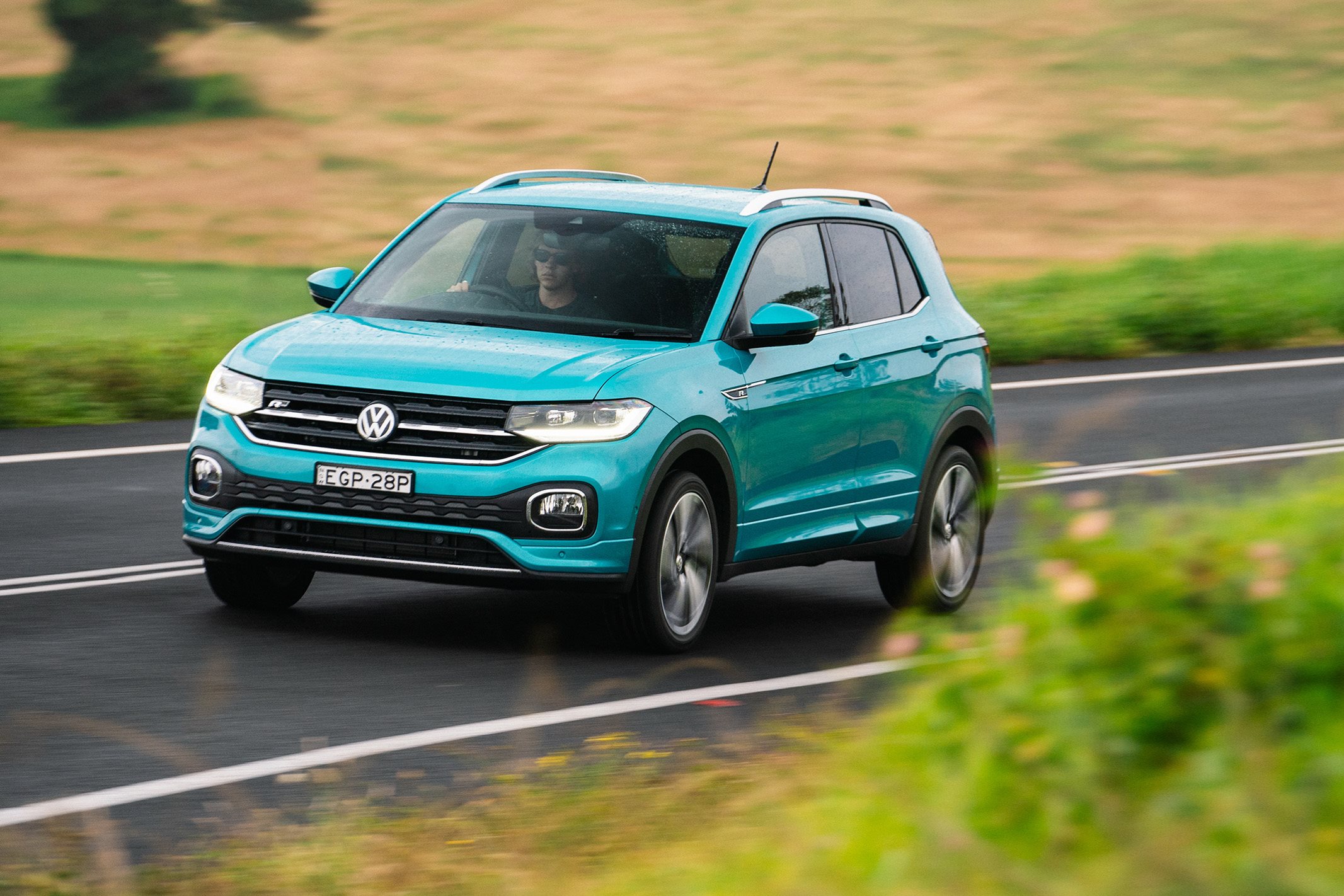
Score breakdown
Things we like
- Standard features, fuel economy, driving position, spacious interior
Not so much
- Conservative looks, Stop/Start delay, no rear air vents
What stands out?
Based on the Polo hatchback, the T-Cross is the more affordable of Volkswagen’s two small SUVs. It’s powered by an economical three-cylinder turbocharged engine and comes with excellent smartphone integration and a safety suite that includes autonomous emergency braking and parking sensors.

What might bug me?
Stop-start driving with the auto transmission, which occasionally hesitates and can be inconsistent on take-offs. The T-Cross’ DSG auto is great once you’re moving, but many drivers do not find it as smooth and easy in town as a conventional or CVT auto.
Driving after a puncture. The T-Cross has a space-saver spare wheel, which limits the recommended top speed to 80km/h.
Paying more for fuel: the turbo engine requires premium unleaded, which costs more than regular unleaded.
What body styles are there?
Five-door wagon only.
The T-Cross is front-wheel-drive only and is classed as a small SUV lower priced.

What features does every T-Cross have?
- An 8.0-inch colour touchscreen from which you can control the sound system and other cabin functions.
- A six-speaker sound system with an AM/FM radio, a CD player, an SD card slot, Aux and 4 x USB inputs, and Bluetooth audio streaming.
- Support for Apple CarPlay and Android Auto. If you plug in a compatible iPhone or Android smartphone, some phone apps – including mapping and music – are mirrored on the touchscreen display and can be controlled from there.
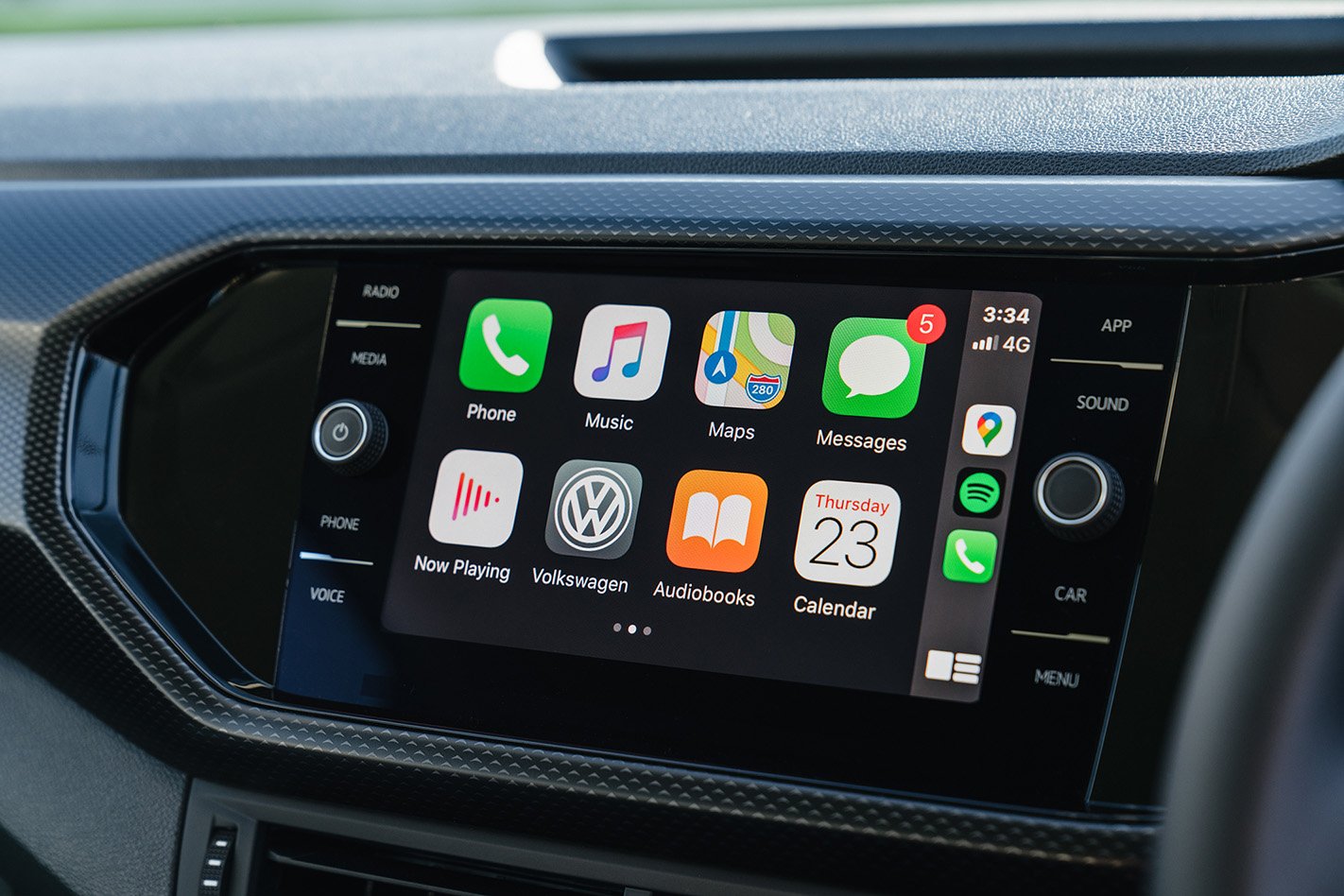
- A reversing camera and parking sensors front and rear.
- Active safety including autonomous emergency braking, lane-keeping assist, lane departure warning, driver fatigue detection, and vehicle distance warning.
- Cruise control with speed limiter.
- 7-speed DSG (direct-shift gearbox) automatic transmission.
- Wireless phone charging for compatible smartphones.
- Windscreen wipers that operate automatically when it rains.

- Headlights that switch on automatically in low light, LED daytime running lights, LED tail-lights, and fog lamps.
- Auto-dimming rearview mirror.
- Air-conditioning.
- A leather-wrapped steering wheel that carries buttons for operating the cruise control, the audio system, and your phone.
- Aluminium alloy wheels, which are lighter and more stylish than steel wheels.
- A space-saver spare wheel (with a recommended top speed of 80km/h).
- Tyre pressure monitoring, which alerts you if a tyre is losing air.
- Electronic stability control, which can help control a skid or slide (all new cars must have this feature) and six airbags – for the placement of airbags, and more on T-Cross safety systems, please open the Safety section below.
- The T-Cross comes with Volkswagen’s five-year, unlimited-kilometre warranty.
Which engine uses least fuel, and why wouldn’t I choose it?
So far there is only the one engine available in the T-Cross range – a three-cylinder turbocharged 85TSI petrol engine that’s shared with the Polo hatchback. In the T-Cross it consumes 5.4 litres/100km on the official test (city and country cycles combined).
It’s an excellent little engine around town, but in the 88kg heavier T-Cross it feels a touch weak when you put the foot down.
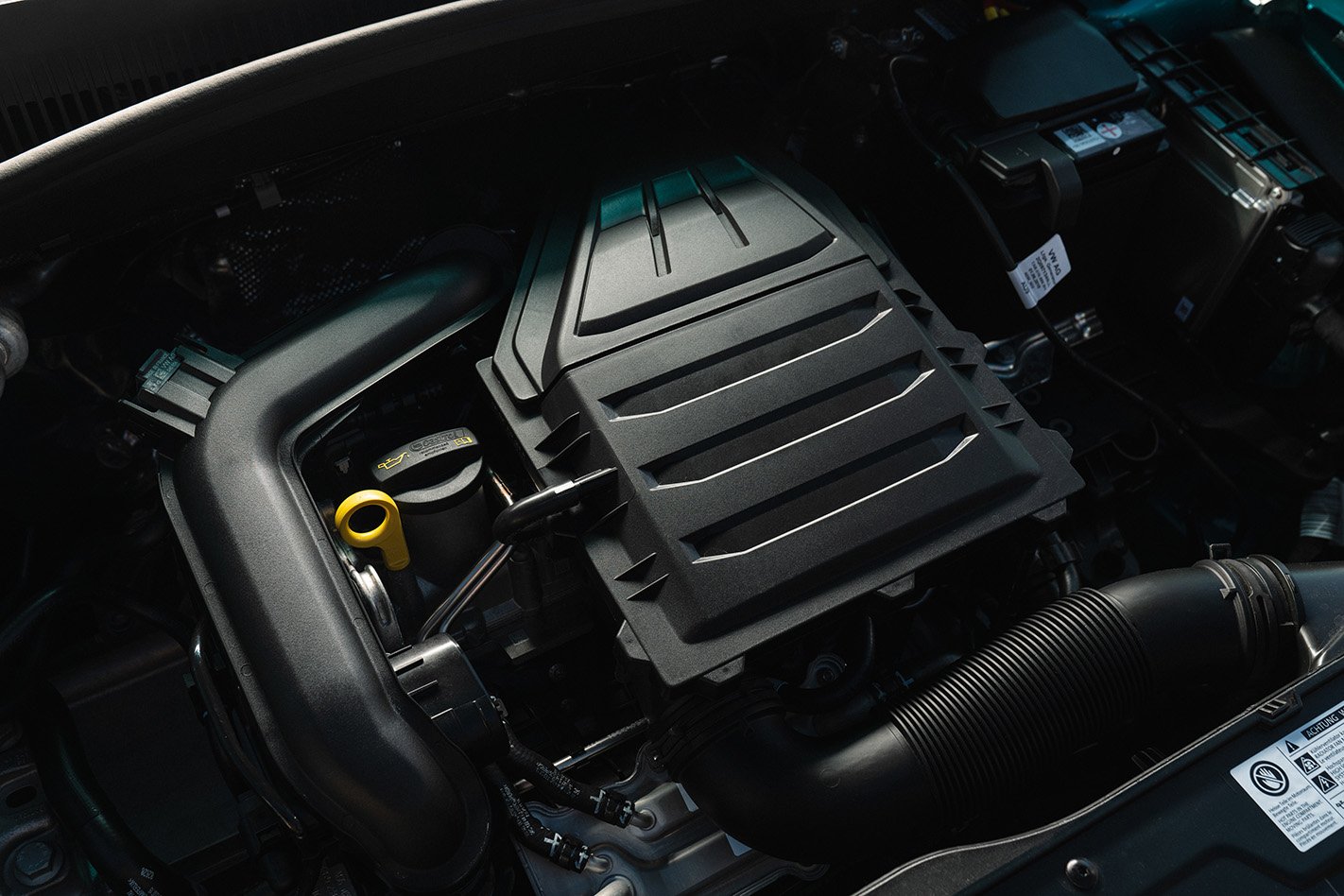
The 85TSI comes with seven-speed DSG (for direct-shift gearbox) automatic transmission. DSG, or dual-clutch, auto gearboxes work much like a manual gearbox with robotic control. It shifts very smoothly and quickly and saves fuel, but cannot match the fluid take-off from rest that you get with conventional or CVT autos.
What key features do I get if I spend more?
The least costly T-Cross, the 85TSI Life, has cloth-covered seats, 16-inch wheels and manual air-conditioning.
Spend more on the T-Cross Style and you gain dual-zone air-conditioning that lets the front passenger choose their temperature, more premium sports cloth seats and bigger 17-inch alloys.

The T-Cross 85TSI Style also brings:
- Keyless Access lets you unlock the car and drive away without removing the key from your bag or pocket.
- Brighter and longer-lasting LED headlights with automatic high-beam.
- A Driver Assistance package that includes adaptive cruise control, blind-spot monitor, rear-cross traffic alert, electric folding mirrors, and park assist that steers your T-Cross into a parking bay or parallel parking spot.
- Front and rear carpet.
- LED ambient dashboard lighting.
- Paddle shifters on the steering wheel.
Option packages
The Drive Assistance package that’s standard in the T-Cross Style is available as an extra-cost option in the T-Cross Life.
A Sound & Vision package can be added to both versions, which brings includes a 300W Beats premium audio system with 8-channel digital amplifier and subwoofer. You also get Digital Cockpit; a high resolution 10.25-inch digital instrument colour display screen with customisable displays.
The T-Cross Style is also available with an R-Line Package that makes it look sportier with a series of exterior and interior enhancements including revised bumpers and side sills, a black rear spoiler, bigger 18-inch wheels with thinner low-profile tyres, R-Line Vienna leather sports seats, brushed stainless steel pedals, sports steering wheel with paddle shifters, black headliner, and aluminium scuff plates inside the door frames with R-Line logos.
Does any upgrade have a down side?
Opting for the Sound and Vision package loses 80-litres of boot space, which is taken up by the amplifier and subwoofer.
How comfortable is the T-Cross?
The T-Cross is a supremely comfortable place to spend time, thanks not only to its supportive seats, but also the compliant suspension tune that irons out road imperfections and shields the occupants over larger bumps far better than a small SUV should.
The entry-level T-Cross Life has firm but comfortable cloth seats with a nice blend of patterns, and most touchpoints are covered by either leather or fabric.
It’s similarity to the Polo is noticeable as soon as you jump inside. However, there’s noticeably more headroom and the high-riding seating position is more pronounced than with other crossovers such as the Mazda CX-3 and Hyundai Kona.
The additional height also makes getting in and out a breeze and provides convenient access to the 385-litre boot space.
The dashboard and door cards are clad with hard plastic but feel sturdy and likely to stand the test of time. The Style variant livens the vibe up a bit with bolstered seats, more features and nicer materials.
Space up front is comfy, and the second row seats to taller adults comfortably.
Although not particularly feelsome, the steering has a nice weight to it without feeling toy-like, while the seven-speed DSG transmission does a good job of selecting ratios about town.
What about safety in a T-Cross?
Every T-Cross has the mandatory electronic stability control, auto wipers, a reversing camera, front and rear parking sensors, daytime running lights (which help other drivers see you), and seven airbags.
In addition, each T-Cross version has city-speed auto emergency braking, a highway-speed forward collision alert, lane-keeping assistance, and a driver fatigue monitor.
Two airbags protect the driver and front passenger’s upper bodies from frontal impacts, and a third protects the driver’s knees. One outside each front seat protects at chest level from side impacts. And curtain airbags extending down each side of the car at head level protect front and rear passengers from side impacts.
The T-Cross’ standard driver assist systems use radar and camera sensors to monitor the roadway ahead when you’re driving.
Its autonomous emergency braking, which Volkswagen calls Front Assist with City Emergency Brake, operates at speeds up to 30km/h and can automatically brake the car if it concludes a collision is imminent (typically with a sharply slowing vehicle ahead).
Lane-keeping assist uses the camera to monitor lane markers. At speeds over 55km/h, if it concludes you are drifting out of your lane – perhaps from distraction – it will gently adjust the steering in an attempt to bring you back. If you continue to drift, it will vibrate the steering wheel and flash a warning.
Fatigue Detection monitors your movements of the steering wheel. If they suggest you might be falling asleep, it proposes you take a break.
Should none of this prevent a crash (perhaps because you have been hit from behind), Multi-collision brake acts to prevent your drifting into the path of another vehicle after impact, automatically applying the brakes.
Additional standard safety equipment is available in the Driver Assistance pack that’s an extra cost-option in the 85TSI Life but comes standard with the 85TSI Style. Among other features, it adds blind-spot monitoring and rear-cross traffic alert – both relying on rear-facing sensors. The former helps you avoid changing lanes into the path of an adjacent or overtaking vehicle, warning you with a light in the exterior mirror and even seeking to steer you away from danger. The latter works when you are reversing, looking to either side behind you for vehicles crossing on a collision course.
The Australasian New Car Assessment Program (ANCAP) has rated the T-Cross at five stars for safety, most recently in April 2020.
I like driving – will I enjoy this car?
The T-Cross doesn’t stray too far from the Polo’s dimensions making it still easy to manoeuvre while having the benefit of a raised driving position that offers good visibility.
The 1.0-litre turbo engine is remarkably quiet and smooth even when pushing up through the rev range, but while its relatively meagre 85kW/200Nm outputs might suit the Polo, the same unit in the 88kg heavier T-Cross feels a touch weak.
The seven-speed DSG transmission does a good job of selecting ratios about town but does succumb to its type’s typically slow, hesitant take-off from a set of lights, which is compounded by the activation of the engine stop/start function.

How is life in the rear seats?
The T-Cross has decent legroom and excellent head and foot room that will please taller people.
Rear seaters are treated to two USB ports and they can store items in handy door pockets. There are no rear air vents, but this isn’t a real issue in a smallish cabin like this.
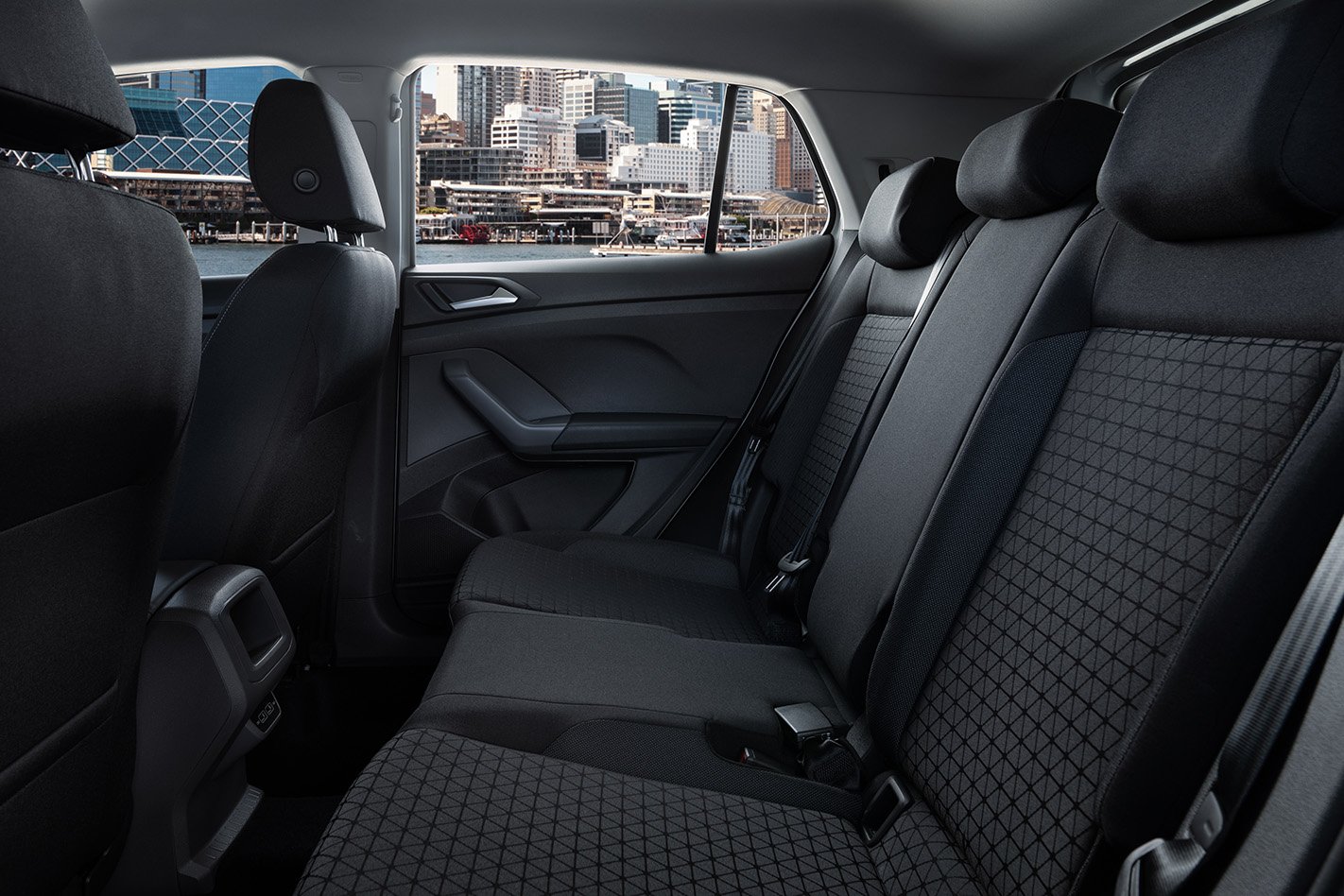
How is it for carrying stuff?
The second row of seats in the T-Cross can slide 140mm fore and aft which can vary boot space between 385-455 litres. Folding the rear seats flat expands cargo-carrying capacity to 1281 litres. They also fold individually in a 60:40 split which adds flexibility for combining rear passengers with long loads.
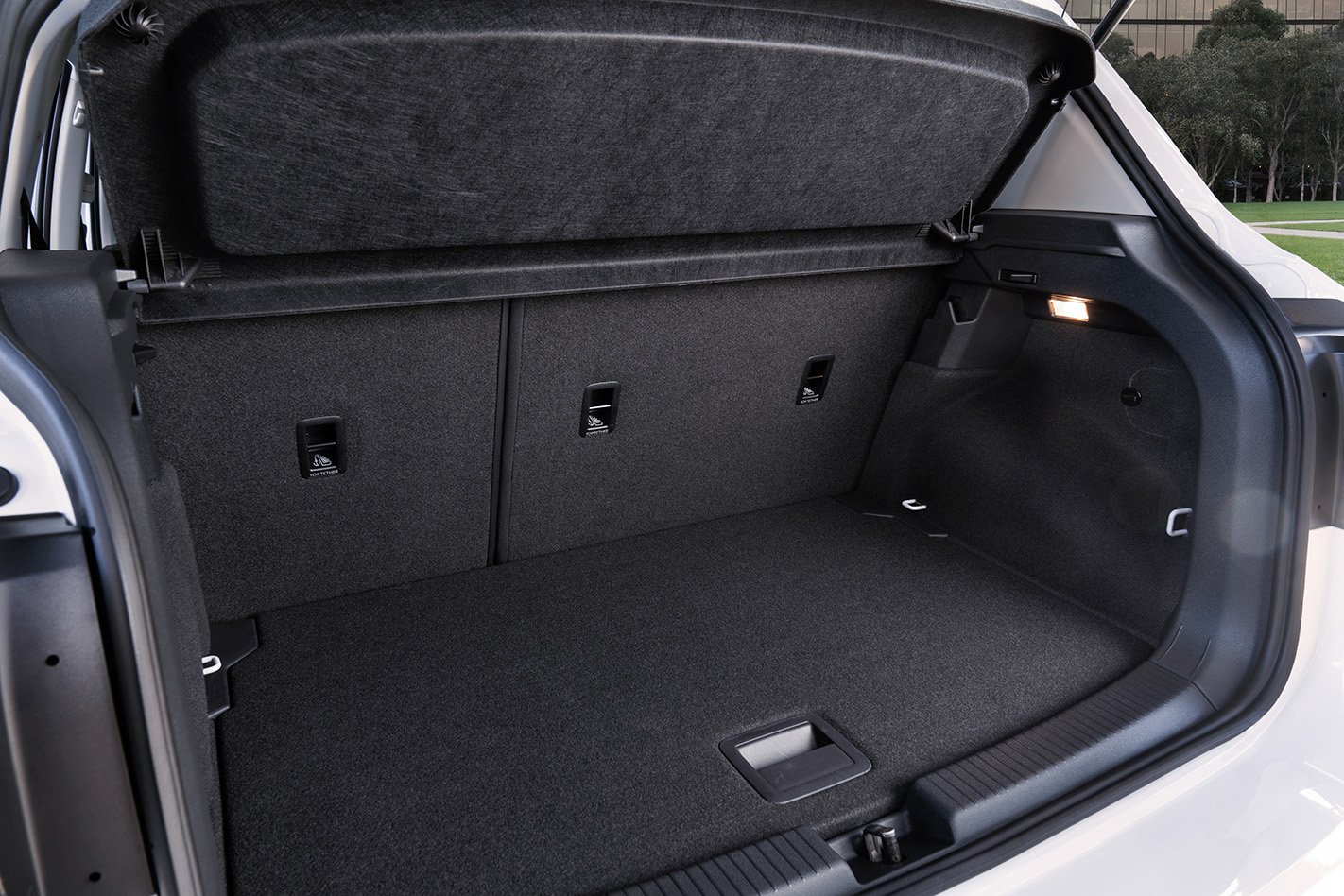
Where does Volkswagen make the T-Cross?
All T-Cross’ sold in Australia are manufactured in Spain.
What might I miss that similar cars have?
The T-Cross is one of the newer and better equipped small SUVs on the market so there isn’t too much that it misses out on compared to its rivals. A notable omission is the lack of an all-wheel-drive option, as available the Toyota C-HR, Hyundai Kona, Kia Seltos and Subaru XV.
Or you might want a bit more power as available with the above plus the Nissan Qashqai, Skoda Karoq, and Mazda CX-3.
Volkswagen has both covered with T-Cross’ sportier sibling the T-Roc, which is slightly bigger and a tad more expensive.

I like this car, but I can’t choose which version. Can you help?
Both T-Cross versions are very similar, but the 85TSI Style has some decent extras included in the price to justify the additional $3000 over the Life.
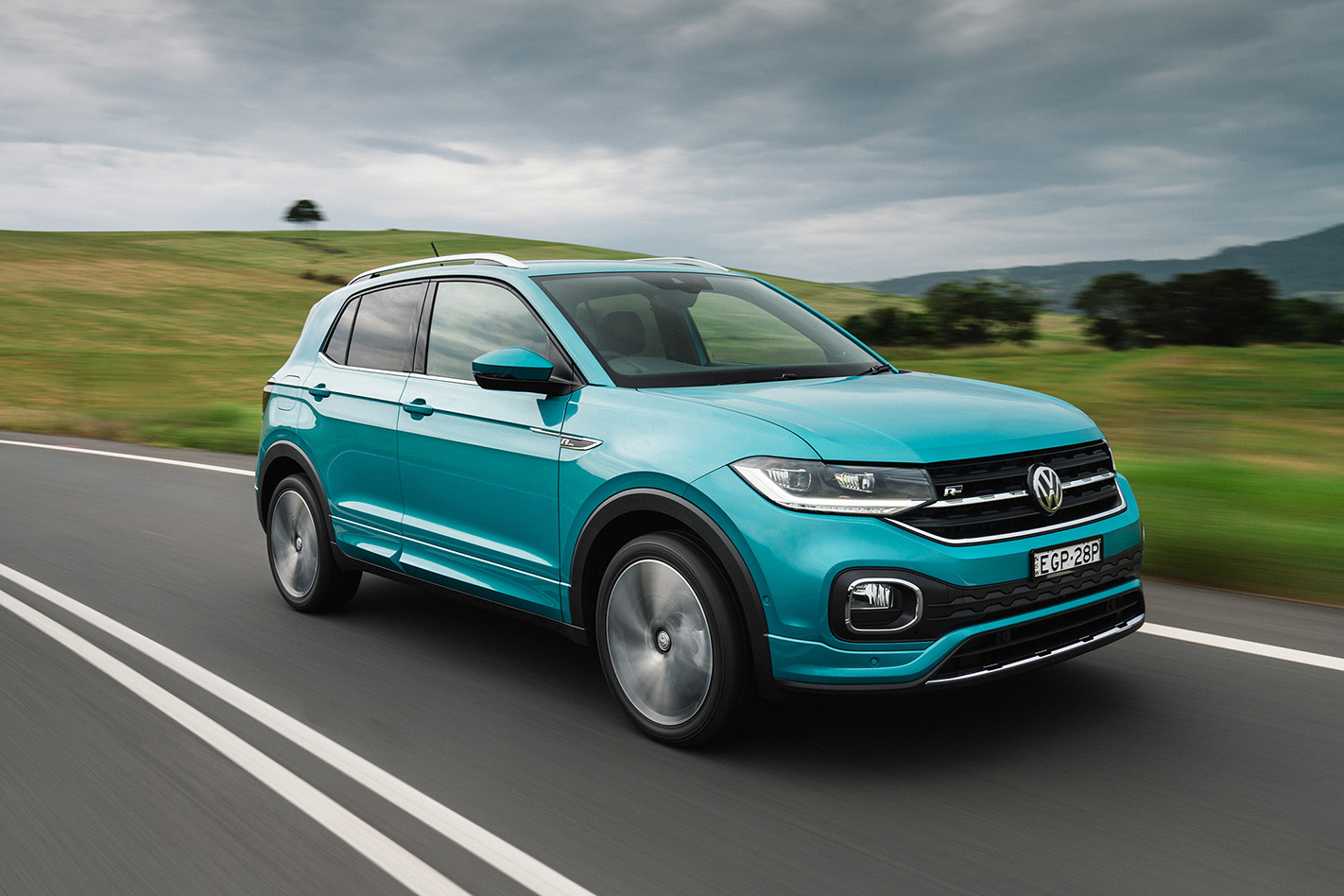
Are there plans to update this model soon?
The T-Cross arrived in Australia in May 2020, about a year after it was launched overseas so an update might arrive by the end of 2022.
Volkswagen Australia was going to introduce a more powerful four-cylinder 110TSI version but this is no longer the case.
Expect to see special edition versions from time to time.
Score breakdown
Things we like
- Standard features, fuel economy, driving position, spacious interior
Not so much
- Conservative looks, Stop/Start delay, no rear air vents



